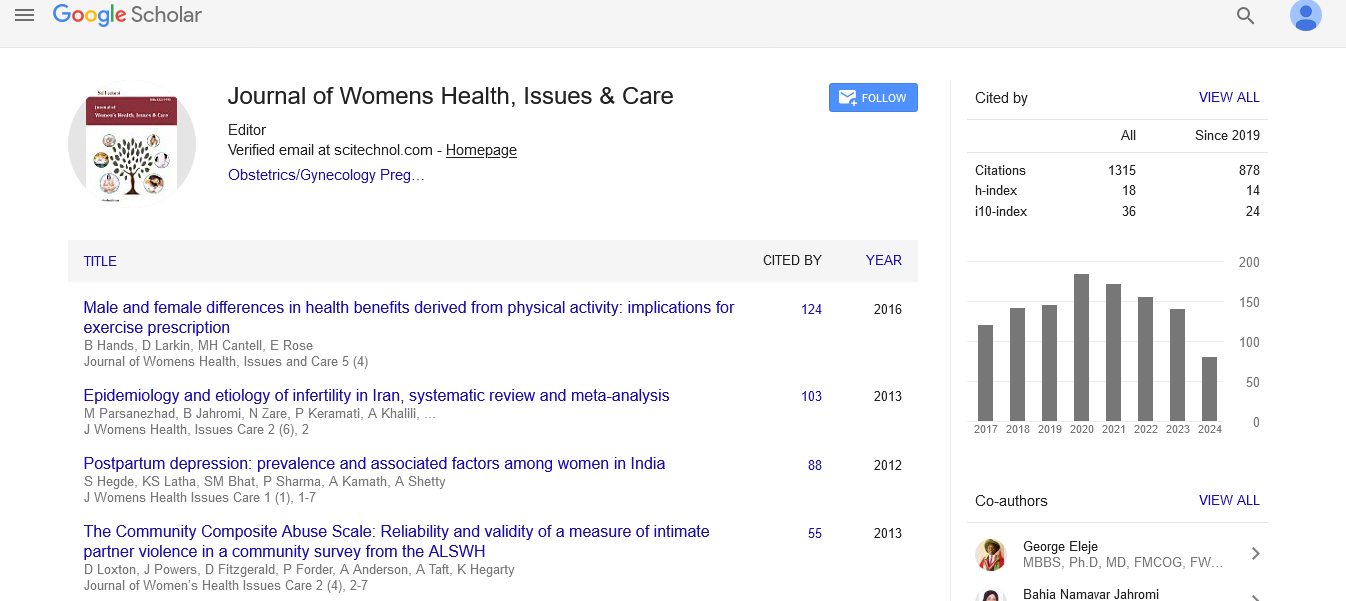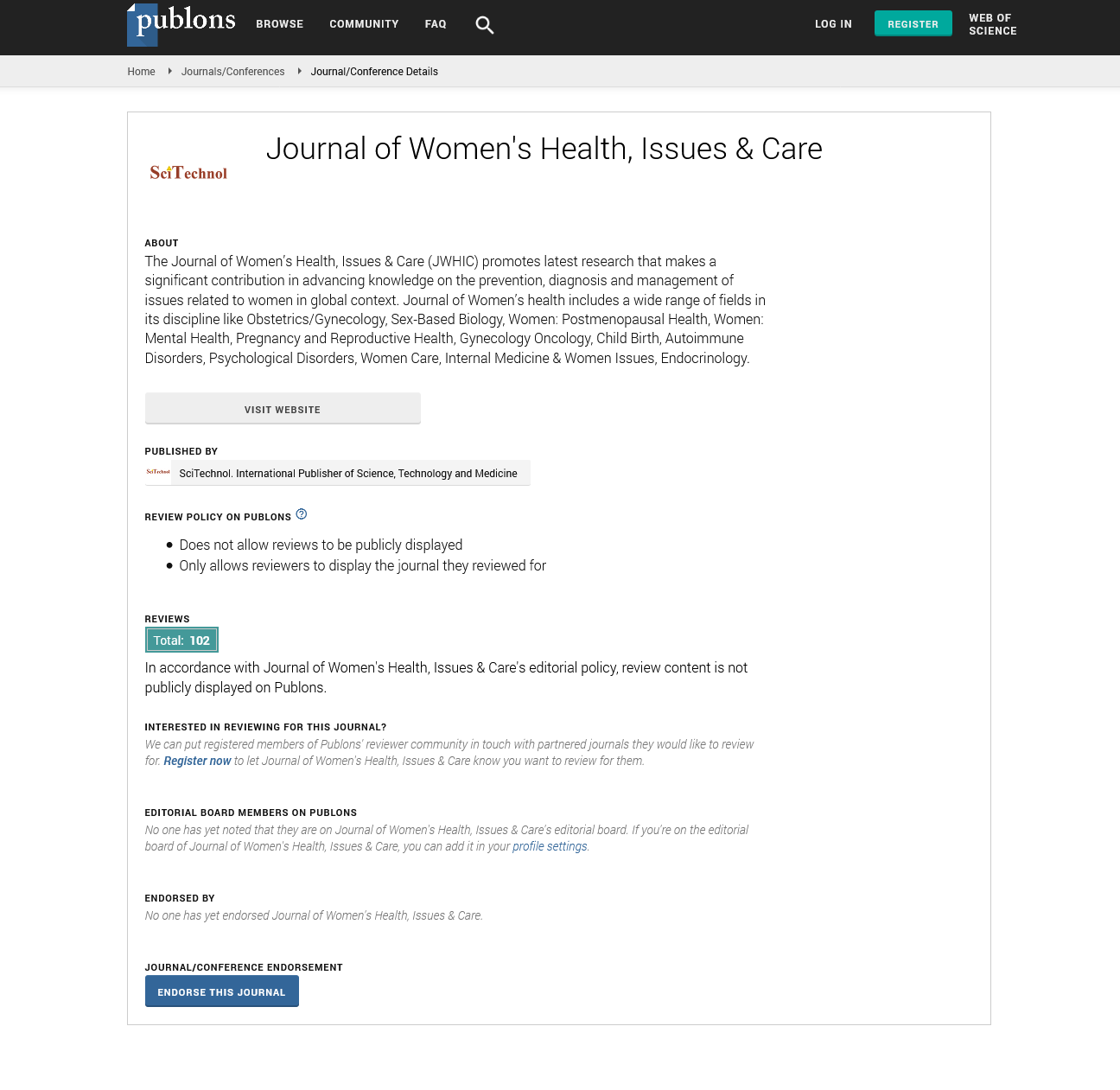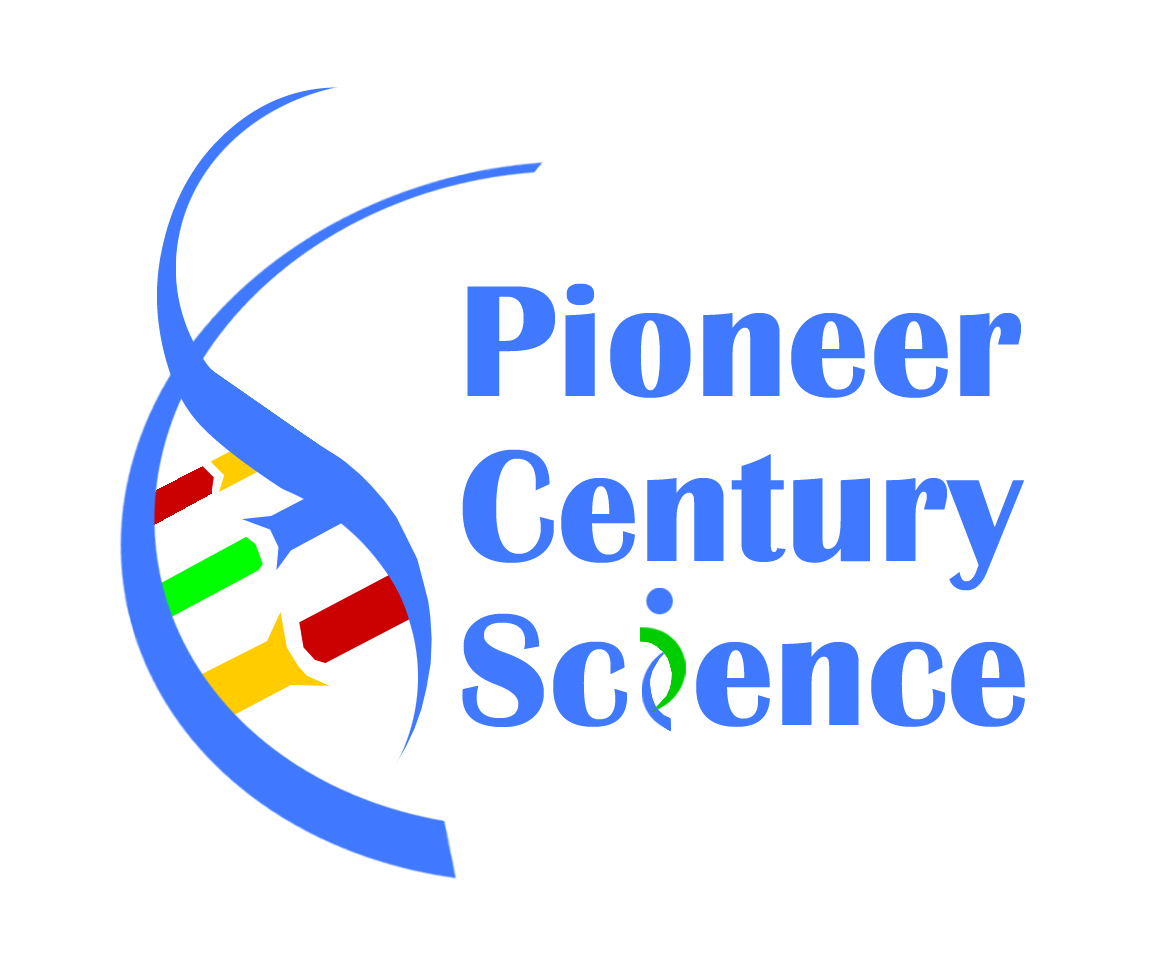Perspective, J Womens Health Vol: 13 Issue: 3
Insights into Uterine Cancer: Risk Factors, Diagnosis and Therapeutic Strategies
Kim Lachine*
1Department of Obstetrics and Gynecology, Seoul National University College of Medicine, Seoul, Republic of Korea
*Corresponding Author: Kim Lachine,
Department of Obstetrics and Gynecology,
Seoul National University College of Medicine, Seoul, Republic of Korea
E-mail: lachinekim@seouledu.kr
Received date: 31 May, 2024, Manuscript No. JWHIC-24-140055;
Editor assigned date: 03 June, 2024, PreQC No. JWHIC-24-140055 (PQ);
Reviewed date: 18 June, 2024, QC No. JWHIC-24-140055;
Revised date: 26 June, 2024, Manuscript No. JWHIC-24-140055 (R);
Published date: 04 July, 2024 DOI: 10.4172/2325-9795.1000503.
Citation: Lachine K (2024) Insights into Uterine Cancer: Risk Factors, Diagnosis and Therapeutic Strategies. J Womens Health 13:3.
Description
Uterine cancer, also known as endometrial cancer, is a prevalent form of cancer affecting women's reproductive organs. It arises from abnormal cell growth in the lining of the uterus, known as the endometrium.
Understanding uterine cancer
Uterine cancer primarily originates in the endometrium, the inner lining of the uterus where fertilized eggs implant and develop during pregnancy. The exact cause of uterine cancer is not fully understood, but several risk factors contribute to its development, including hormonal imbalances, obesity, and genetic predisposition.
Causes and risk factors
Uterine cancer develops when cells in the endometrium, the lining of the uterus, mutate and grow uncontrollably. Several factors increase the risk of developing this cancer:
Hormonal imbalances: Excess estrogen without progesterone balance, often seen in women undergoing Hormone Replacement Therapy (HRT) without progesterone, can elevate the risk.
Obesity: Adipose tissue converts hormones into estrogen, potentially increasing the risk of uterine cancer.
Age and menopause: Women over 50 are more likely to develop uterine cancer, with most cases diagnosed after menopause.
Endometrial hyperplasia: Abnormal thickening of the uterine lining can precede cancer development.
Family history: Having a close relative with uterine or colorectal cancer increases the risk.
Symptoms and diagnosis
Early detection of uterine cancer is important for successful treatment. Common symptoms include abnormal vaginal bleeding (after menopause or between periods), pelvic pain, and unusual discharge. Diagnostic procedures such as pelvic exams, ultrasound, biopsy, and imaging tests help confirm diagnosis and determine the extent of cancer spread.
Treatment options
Treatment for uterine cancer depends on the cancer stage, overall health, and personal preferences of the patient. Options include:
Surgery: The primary treatment involves surgical removal of the uterus (hysterectomy) and may include removal of ovaries and fallopian tubes (salpingo-oophorectomy).
Radiation therapy: High-energy rays target and destroy cancer cells, often used post-surgery to eliminate remaining cancer cells or as primary treatment for those who cannot undergo surgery.
Chemotherapy: Medications are used to kill cancer cells, either orally or intravenously, particularly for advanced or recurrent uterine cancer.
Hormone therapy: Hormonal treatments aim to block or lower estrogen levels, reducing the risk of cancer recurrence in hormonesensitive tumors.
Preventive measures
While some risk factors like age and genetics cannot be changed, lifestyle modifications can reduce the risk of uterine cancer:
Maintaining a healthy weight: Achieving and maintaining a healthy weight through diet and exercise can help reduce estrogen levels and lower uterine cancer risk.
Hormonal therapy: For women undergoing Hormone Replacement Therapy (HRT), using progesterone in combination with estrogen may lower the risk of uterine cancer.
Regular medical check-ups: Routine gynecologic exams and discussions with healthcare providers about symptoms or concerns can facilitate early detection and prompt treatment.
Conclusion
Uterine cancer poses significant health risks for women, but early detection and advancements in treatment offer favorable outcomes. Understanding the risk factors, recognizing symptoms, and seeking timely medical care are essential in managing and treating uterine cancer effectively. Through awareness, preventive measures, and ongoing research, strides continue to be made in improving outcomes and quality of life for women diagnosed with uterine cancer.
 Spanish
Spanish  Chinese
Chinese  Russian
Russian  German
German  French
French  Japanese
Japanese  Portuguese
Portuguese  Hindi
Hindi 



